Contents
- Telangana Statehood Day
- New Science, Technology, and Innovation Policy (STIP)
- Greenfield Expressway to Amritsar Demand
- TRIFED Support to Tribal Artisans in Distress
- NCMC reconvenes for ‘Nisarga’
TELANGANA STATEHOOD DAY
Focus: GS-II Governance, Prelims
Why in news?
The Prime Minister has greeted the people of Telangana, on Statehood Day.
In February 2014, Andhra Pradesh Reorganisation Act, 2014 bill was passed by the Parliament of India for the formation of Telangana state comprising ten districts from north-western Andhra Pradesh.
The state of Telangana was officially formed on 2 June 2014.
Telangana region after Independence
- When India became independent from the British Empire in 1947, the Present region of Telangana was a part of the Hyderabad Princely State.
- The Nizam of Hyderabad did not want to merge with the Indian Union and wanted to remain independent.
- The Government of India annexed Hyderabad State on 17 September 1948 after a military operation called Operation Polo – The Nizam’s army surrendered and India then incorporated the state of Hyderabad and ended the rule of the Nizams.
- In 1956 during the reorganisation of the Indian States based along linguistic lines, the state of Hyderabad was split up among Andhra Pradesh and Bombay state (later divided into states of Maharashtra and Gujarat in 1960 with the original portions of Hyderabad becoming part of the state of Maharashtra) and Karnataka.
History of Formation of Telangana
- The seeds of Telangana struggle were sown in 1955 when the recommendation of the States Reorganisation Commission to retain Hyderabad as a separate State went unheeded.
- Telangana leaders accused the people of Andhra of “colonising the region” by grabbing their jobs and land, and the government of not investing in the region’s infrastructure.
- On November 1, 1956, Telangana merged with the State of Andhra, carved out of erstwhile Madras, to form Andhra Pradesh, a united-state for the Telugu-speaking populace.
- The State witnessed a violent ‘separate Telangana’ agitation in 1969 and a ‘separate Andhra’ agitation in 1972.
- Many believe it was the creation of Chhattisgarh, Jharkhand and Uttaranchal (now Uttarakhand) states that spurred the demand for Telangana.
Karimnagar — the hotbed of the movement
- During the first phase of the movement in 1969, Karimnagar district emerged as the centrestage for the intensification of agitations.
- Karimnagar was the host for the intensification of Telangana statehood movement in 2009, when the TRS president had decided to launch a fast-unto-death, demanding the Telangana State.
- The movement had spread like a wildfire after the arrest of K. Chandrasekara Rao in Karimnagar who was on his way to begin fast-unto-death, and several youth had committed suicide for the cause of Telangana.
- Following the continuation of his fast-unto-death while in a hospital, the Union government had announced the formation of separate Telangana State on December 9, 2009.
Sri Krishna Committee report
- On February 3, 2010, a panel headed by Justice (Retd.) B.N. Srikrishna was formed to “bring about a permanent solution” to the statehood demand.
- In December 2013, the Union Cabinet approved a Bill for the creation of Telangana State with 10 districts, paving the way for the bifurcation of Andhra Pradesh.
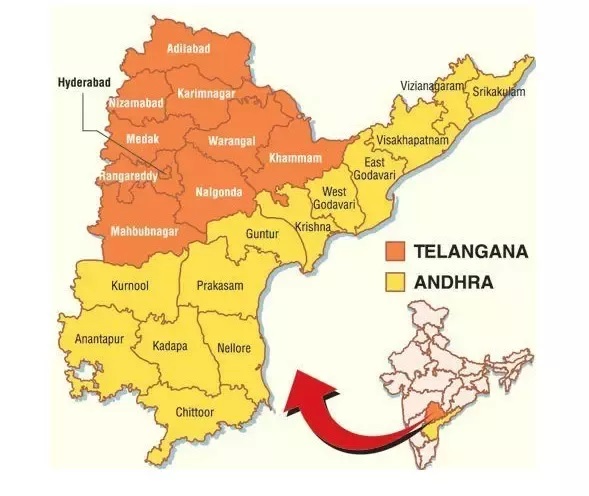
Features of A.P. Reorganisation Bill
- The Bill envisages Hyderabad as the common capital. The Andhra Pradesh Governor will be Governor for both successor States of Andhra Pradesh and Telangana.
- The Centre will set up an apex council for the supervision of Krishna and Godavari rivers on water sharing.
- The High Court at Hyderabad will be common for both States till a separate High Court is set up for residuary Andhra Pradesh.
NEW SCIENCE, TECHNOLOGY, AND INNOVATION POLICY (STIP)
Focus: GS-III Science and Technology, Prelims
Why in news?
The Office of the Principal Scientific Adviser to the Government of India (Office of PSA) and the Department of Science and Technology (DST) have jointly initiated a decentralized, bottom-up, and inclusive process for the formulation of a new national Science Technology and Innovation Policy (STIP 2020).
Details
- The fifth S&T policy of India is being formulated at a crucial juncture when India and the world are tackling the COVID-19 pandemic.
- This is only the latest among the many important changes in the past decade that have necessitated formulation of a new outlook and strategy for Science, Technology, and Innovation (STI).
- The STI Policy for the new India will also integrate the lessons of COVID-19 including building of an Atmanirbhar Bharat (self- reliance).
Science and Technology Policy (STP), A History
- Since our independence in 1947, India has been successful in building a massive ecosystem of science, technology and innovation (STI). An STI ecosystem includes universities, public and private enterprises, and human resources.
- Scientific Policy Resolution (SPR 1958): Our first major science policy can be traced back to the year 1958. The policy document was drafted by the government of the then Prime Minister of India, Jawaharlal Nehru. SPR1958 laid the foundation of scientific enterprise and scientific temper in India.
- Technology Policy Statement (TPS 1983): Prime Minister, Indira Gandhi had announced the Technology Policy Statement (TPS) at the Science Congress in January 1983. It focused on the need to attain technological competence and self-reliance. Several of the statements of TPS were implemented.
- Science, Technology Policy (STP 2003): With rapid advancement in information and communication technologies and the democratisation of the internet, exchange of knowledge and information was occurring at a previously unseen rate.Subsequently, a Science and Technology Policy (STP) was announced in 2003, seeking to bring science and technology (S&T) together. It basically called for integrating programmes of socio-economic sectors with the national R&D system and the creation of a national innovation system.
- Science, Technology and Innovation Policy (STIP 2013): The decade of 2010 to 2020 was declared as a decade of innovation, and as the name suggests, a critical new element in this policy document was the term “innovation”. Promoting a science and technology-led innovation ecosystem in the country and broadly linking science, technology and innovation to socio-economic priorities were some of the key aspects of STIP 2013. This policy also resulted in India’s increased participation in global mega-science initiatives such as the Laser Interferometer Gravitational-Wave Observatory (LIGO), the Large Hadron Collider (LHC — CERN).
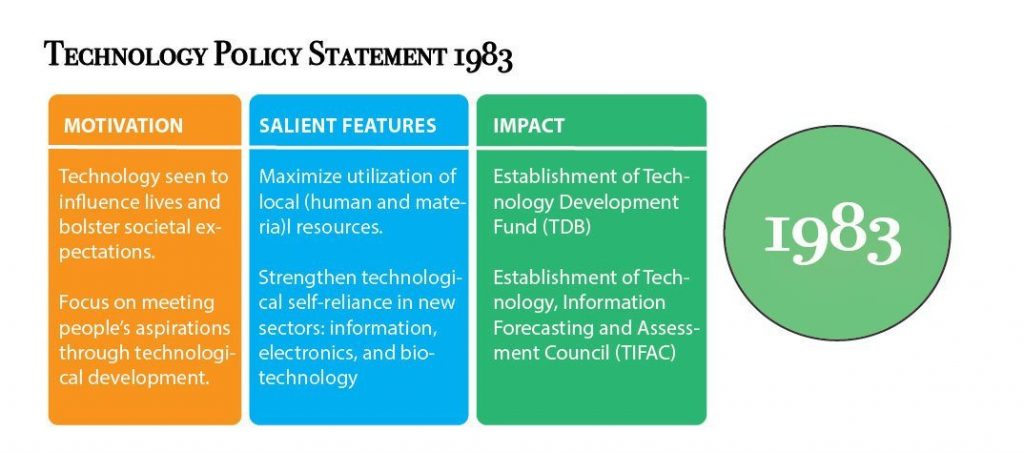
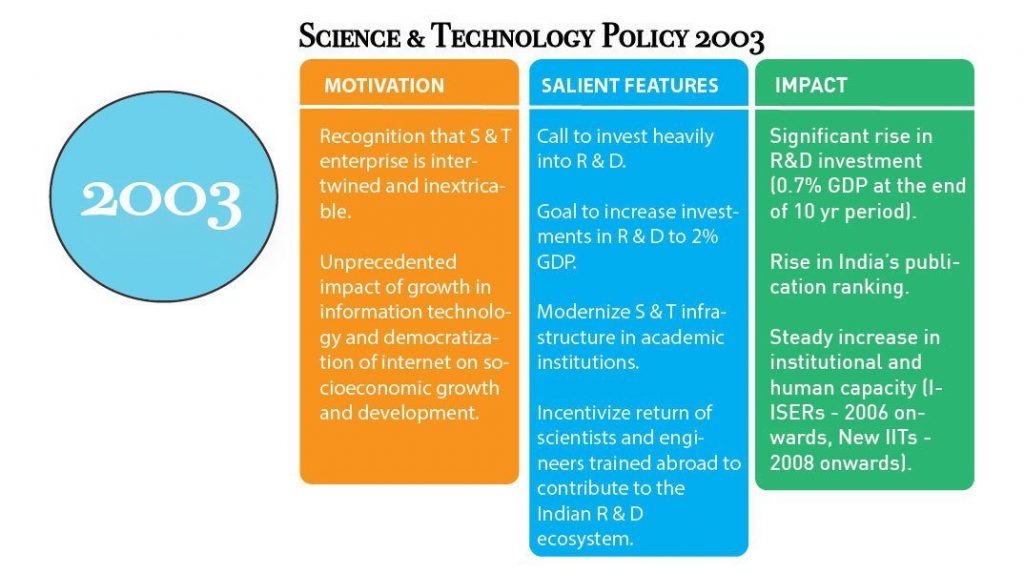
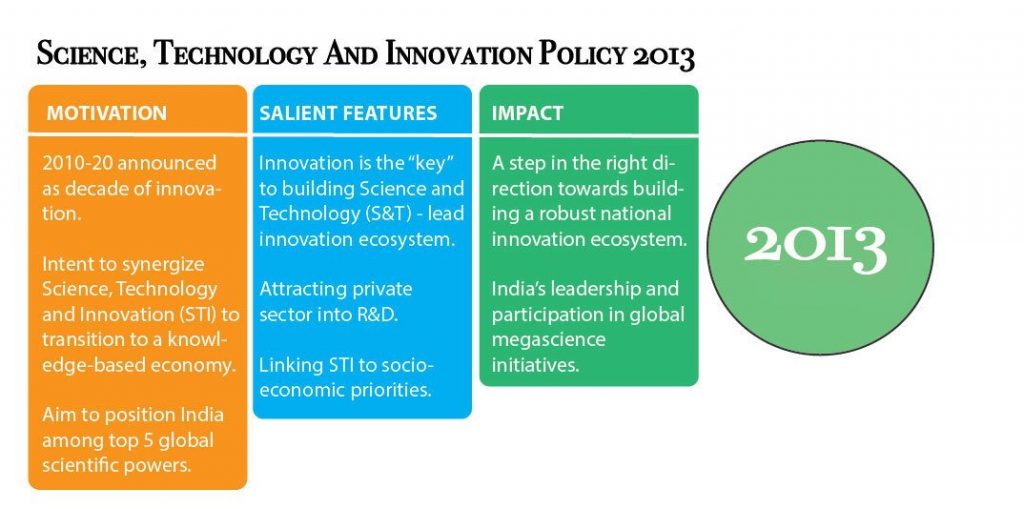
GREENFIELD EXPRESSWAY TO AMRITSAR DEMAND
Focus: GS-III Industry and Infrastructure, Prelims
Why in news?
Union Minister for Road Transport & Highways and MSMEs Shri Nitin Gadkari announced the development of a new Greenfield connectivity to Amritsar City from Nakodar on 2nd June, as part of Delhi-Amritsar Expressway.
Significance of this Delhi-Amritsar Expressway
- This greenfield alignment will not only provide shortest and alternate express connectivity to Amritsar city but also to other religious centres of Sultanpur Lodhi, Goindwal Sahib, Khadoor Sahib as well as the recently developed Dera Baba Nanak/Kartarpur Sahib International Corridor in Punjab.
- With this expressway, travel time from Amritsar to Delhi International airport would reduce to about four hours from the present about eight hours.
Bharatmala Project
Don’t Focus on Numbers
- Bharatmala Project is one of the biggest highway construction plan so far in the country, to develop approximately 83,677 km of roads at an investment of Rs 6.92 lakh crore by 2022.
- The programme includes the Bharatmala scheme, under which 34,800 km of highways would be constructed at the cost of Rs 5.35 lakh crore.
- Under Bharatmala, the road transport and highways ministry will construct 9,000 km of economic corridors across the country.
- The project also entails constructing 6,000 km long inter corridor and feeder routes, 2,000 km of border and international connectivity roads, 5,000 km to be upgraded under the national corridor efficiency programme, 800 km of greenfield expressways, 10,000 km under the national highway development programme and 2,000 km of coastal and port connectivity roads.
- Under the second phase of Bharatmala, the government has proposed to build nearly 3,000 km of expressways, including Aurangabad-Ahmadnagar-Pune, Varanasi-Ranchi-Kolkata, Indore-Mumbai, Bengaluru-Pune and Chennai-Trichy.
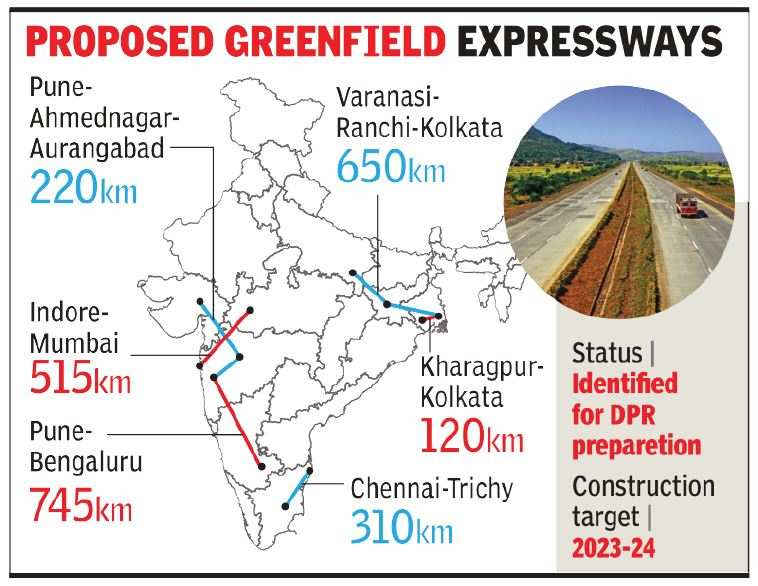
TRIFED SUPPORT TO TRIBAL ARTISANS IN DISTRESS
Focus: GS-II Social Justice, Prelims
Why in news?
TRIFED under Ministry of Tribal Affairs has launched all out efforts to support the tribal artisans in distress due to circumstances arising out of Covid-19.
It has announced an aggressive plan through its TRIBES India retail and e-Com platforms to help artisans kickstart their production and sales operations.
Tribal Cooperative Marketing Development Federation of India (TRIFED)
- The Tribal Cooperative Marketing Development Federation of India (TRIFED) came into existence in 1987.
- It is a national-level apex organization functioning under the administrative control of Ministry of Tribal Affairs, Govt. of India.
- TRIFED has its registered and Head Office located in New Delhi and has a network of 13 Regional Offices located at various places in the country.
- The basic objective of the TRIFED is to provide good price to the products made or collected from the forest by the tribal peoples.
Aims of TRIFED
- The ultimate objective of TRIFED is socio-economic development of tribal people in the country by way of marketing development of the tribal products such as metal craft, tribal textiles, pottery, tribal paintings and pottery on which the tribals depends heavily for major portion of their income.
- TRIFED acts as a facilitator and service provider for tribes to sell their product.
- The approach by TRIFED aims to empower tribal people with knowledge, tools and pool of information so that they can undertake their operations in a more systematic and scientific manner.
- It also involves capacity building of the tribal people through sensitization, formation of Self-Help Groups (SHGs) and imparting training to them for undertaking a particular activity.
Functions of TRIFED
- If the price of the products fluctuates then TRIFED arranges compensation for the tribes from the Ministry of Agriculture.
- It also assures the tribes for purchasing their products at a particular price, primary processing of products, storage of products and transportation etc.
- It provides information related to fair price markets for the ‘Minor Forest Produce (MFP). Like tribes of all over country sell their products in the trade fair organised at the Pragati Maidan, New Delhi every year.
- It helps in increasing the bargaining power of the tribes to fetch good price of the MFP.
- It provides adequate training to the tribes to make value addition to their products.
NCMC RECONVENES FOR ‘NISARGA’
Focus: GS-III Disaster Management
Why in news?
Cabinet Secretary chaired the second meeting of the National Crisis Management Committee (NCMC) to review the preparedness of States and Central Ministries/Agencies to deal with the Cyclonic Storm “Nisarga”.
Why was this necessary?
- India Meteorological Department (IMD) has stated that the Severe Cyclonic Storm is expected to impact the Maharashtra coast by the afternoon/evening of 3rd June.
- High wind speeds ranging up to 100-110 kmph gusting to 120 kmph are expected, accompanied by heavy rainfall and storm surges of 1-2 metres in the coastal districts of the State.
What is being done now?
- NDRF has deployed 40 teams in the States and UT and additional teams are also been airlifted.
- Rescue and relief teams of the Army and Navy along with ships and aircrafts of the Navy and Air Force have been put on standby.
- Ships of the Coast Guard are already engaged in rescuing fishermen at sea.




